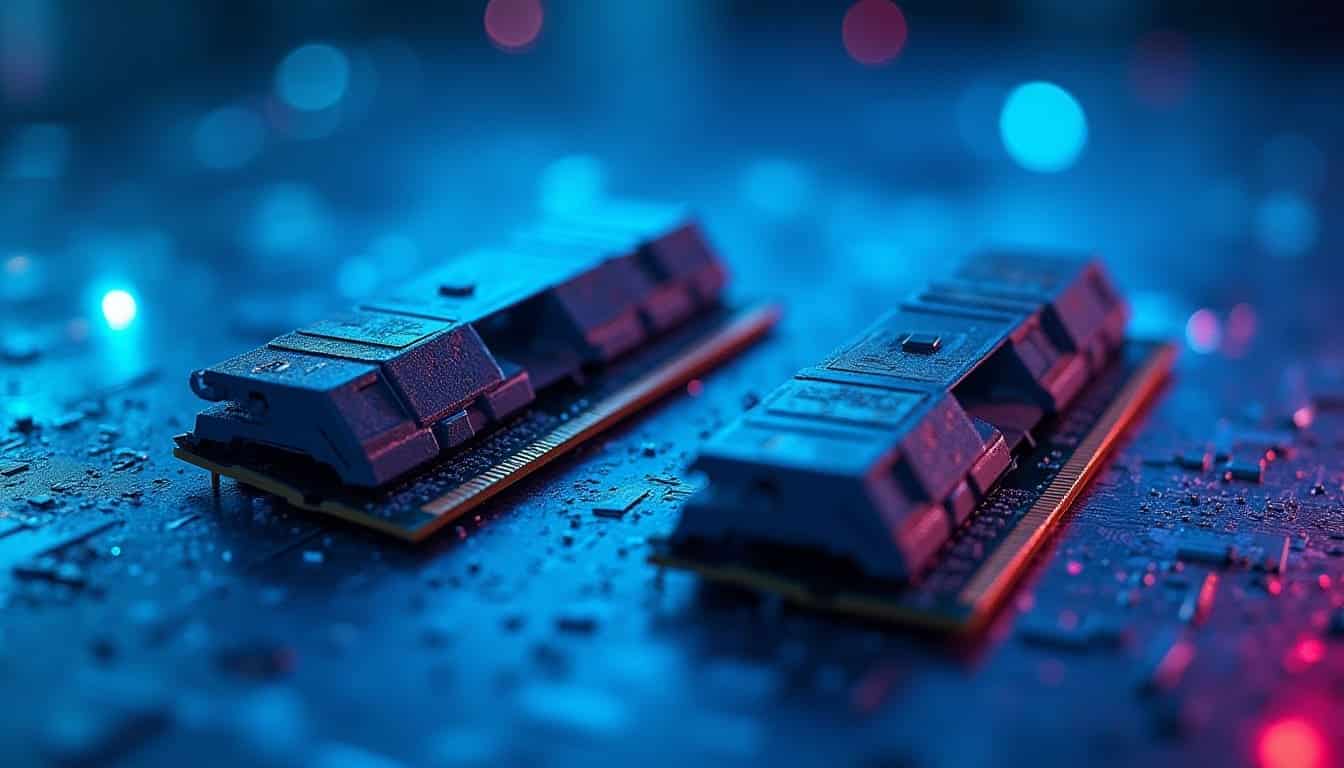What seemed like an unbreakable market rule has been turned on its head: DDR4 memory, with a decade behind it, has doubled in price compared to the modern DDR5. This unprecedented anomaly in the recent history of RAM reflects a phenomenon of critical scarcity combined with a demand that refuses to disappear.
According to spot market data collected by DRAMeXchange, 16 GB DDR4 modules at 3,200 MHz are now priced around 12 dollars, while their DDR5 counterparts (frequencies of 4,800 and 5,600 MHz) are sitting at about 6 dollars. The paradox is clear: the older technology with worse technical specifications costs twice as much as the new generation.
What’s happening?
Everything started discreetly in May 2025. DDR4 prices began to rise gradually, without causing muchalarm. But within weeks, the escalation accelerated dramatically. The main reason: the stock of DDR4 is rapidly dwindling, and many OEM manufacturers still rely on this technology, particularly in mid-range and low-end devices, legacy servers, and industrial systems.
In this context, there has been a real race to hoard DDR4 stock before it disappears from the market. Production is gradually decreasing, and large manufacturers that bet heavily on DDR5 are not responding to the residual demand for the previous generation.
Manufacturers benefiting
Companies like Nanya Technology, the largest current supplier of DDR4, have been the big winners. Against all odds, Nanya chose to maintain its focus on DDR3 and DDR4, which today represents 80% of its revenue. In the stock market, this strategy has translated into positive performance. Other companies such as Winbond and ADATA are also seeing their shares rise due to this scarcity and the renewed interest in the previous generation of memory.
In particular, ADATA has seen spikes of up to 5.4% in its stock, as its clients seek to secure future contracts to ensure supply. Not only is the spot price rising, but also the long-term contracts, with forecasts of increases of 30 to 40% in the next quarter.
A market unprepared for the generational leap
Although the industry had anticipated that by 2025 DDR5 would be the new standard, the truth is that the transition is slower than expected. Mass consumption, especially in emerging markets, has not yet fully adopted the new generation of memory. This is compounded by inflationary pressure, which has delayed investments in new compatible platforms.
In parallel, technologies like DDR6 and PCIe 6.0 have also seen their developments slow down due to costs and lack of commercial traction, in what seems to be a prolonged transition phase.
What does this situation mean for consumers?
For those looking to upgrade their computers with DDR4 modules, the consequences are clear: they will pay more for less. While DDR5 prices remain stable, those depending on older platforms will have to bear an increasing cost or consider complete hardware upgrades.
This also affects the professional channel: data centers, companies with large IT infrastructures, integrators, and NAS manufacturers still operating with DDR4 are seeing their margins tighten.
Conclusion
DDR4 memory, far from being relegated as obsolete technology, has experienced an unexpected economic revival. Its rising costs reflect a structural tension in the DRAM memory market, where industrial planning has not kept pace with the actual adoption rate of new technologies.
A clear lesson for the sector: technological transitions are never linear, and underestimating the persistence of previous generations can be costly.

